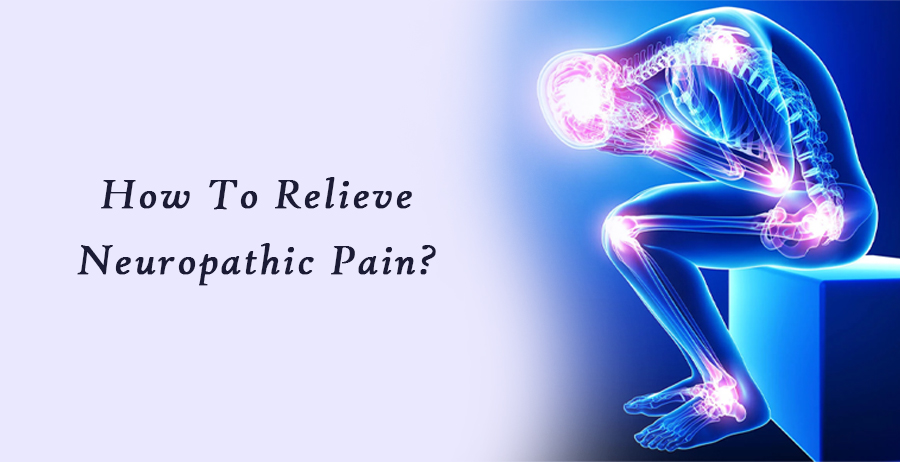Table of Contents
How to Relieve Neuropathic Pain?
Understanding Neuropathic Pain
Neuropathic pain, a complex condition rooted in the nervous system, poses unique challenges for those who experience it.
Whether caused by diabetes, injury, or other health issues, effective management is crucial for improving the quality of life.
In this article, we’ll delve deeper into various strategies and lifestyle changes that can offer relief, addressing each aspect more extensively.
Neuropathic pain arises from damaged or malfunctioning nerves, leading to sensations such as shooting, burning, or tingling.
Unlike typical pain resulting from pain or inflammation, neuropathic pain requires a nuanced approach to management.
Neuropathic pain is often resistant to traditional analgesics and can require multiple medications or other forms of treatment.
Treatment can also involve lifestyle changes, such as reducing stress and getting regular exercise.
The cause of neuropathic pain is often difficult to identify and requires careful diagnosis and assessment.
In some cases, the underlying cause of the nerve damage may be treatable, so it is important to work with a healthcare provider to determine the best course of action.
Medication Management
It is essential to note that prescription medications play a crucial role in the relief of neuropathic pain.
In addition to being developed to treat seizures, anticonvulsant drugs like gabapentin and pregabalin have been proven to modulate neurotransmitters and reduce abnormal nerve firing as well.
Several antidepressants, such as amitriptyline, can also help relieve back pain.
To determine the most suitable medication and dosage for your individual needs, it is imperative to consult your healthcare professional.
Get rid of neuropathic pain with Neuro Seliron 300mg – a precision formula designed to target and alleviate discomfort.
-
Physical Activity and Exercise
Getting active regularly isn’t merely a recommendation; it’s an effective way to deal with neuropathic pain.
Exercise improves blood circulation, reduces inflammation, and releases endorphins, which are a natural painkiller in the body.
Incorporating activities like walking, swimming, or gentle stretching into your daily routines can effectively reduce your pain without causing undue strain on your body.
-
Mind-Body Techniques
Mindfulness meditation and deep breathing exercises are holistic approaches to pain management that use mind-body techniques.
These techniques help individuals cope with neuropathic discomfort by redirecting their focus away from pain, promoting relaxation, and reducing stress by redirecting their focus away from pain.
To reap the long-term benefits of these practices, you must practice them consistently and integrate them into your daily life.
-
Dietary Considerations
Managing nerve pain effectively requires a well-balanced diet. For those with diabetes, controlling carbohydrate intake is an essential part of managing their pain.
Foods rich in omega-3 fatty acids and antioxidants may help alleviate nerve pain and have anti-inflammatory properties.
To manage pain effectively, monitoring blood sugar levels and adopting a healthy diet that supports stable glucose levels is important.
A trusted ally against musculoskeletal pain, Pain O Soma 500mg offers gentle yet effective relief.
-
Temperature Therapy
A simple method of relieving neuropathic pain is the application of heat or cold to the affected area.
In addition to soothing tight muscles and improving blood flow, hot compresses and heating pads can also reduce inflammation and numb the affected areas, while cold packs reduce inflammation and soothe the affected area.
By experimenting with both approaches, individuals can find out which method works best for them.
-
Supportive Footwear
A person with neuropathy often experiences pain in their feet, making appropriate footwear essential.
Shoes that have adequate cushioning and arch support can reduce pressure on sensitive nerves in the feet.
It is important to choose footwear that prioritizes comfort over fashion, avoids high heels, and uses breathable materials to minimize discomfort.
-
Biofeedback Therapy
An important aspect of biofeedback is that it enables individuals to gain control over involuntary bodily functions. This is a valuable tool for managing neuropathic pain.
The use of biofeedback to promote relaxation and reduce muscle pain is a comprehensive and personalized way of managing pain.
Enhancing awareness of body responses and learning how to regulate them helps to promote relaxation and reduce muscle pain.
-
Acupuncture and Massage
Alternative therapies such as acupuncture and massage offer promising avenues for neuropathic pain relief.
Acupuncture involves the insertion of thin needles into specific points on the body, stimulating nerve pathways and triggering the release of natural painkillers.
Massage, through its ability to relax muscles, improve circulation, and reduce stress, provides holistic benefits for pain management.
Take advantage of Pain O Soma 350mg – a potent solution that goes beyond muscle pain and chronic pain.
-
Adequate Sleep
The relationship between quality sleep and neuropathic pain cannot be overstated.
Consistent sleep routines, comfortable sleep environments, and relaxation techniques before bedtime improve sleep quality.
Poor sleep not only exacerbates pain perception but also impedes the body’s natural healing processes, making prioritizing rest essential.
-
Psychological Support
Living with chronic pain takes a toll on mental health.
Seeking psychological support, whether through counseling or therapy, provides valuable tools for coping with the emotional aspects of neuropathic pain.
Learning effective coping strategies and building a robust support system are crucial components of a holistic pain management plan.
-
Physical Therapy
Physical therapy tailored to neuropathic pain can be instrumental in improving mobility and reducing discomfort.
A skilled physical therapist can create a customized exercise plan, addressing specific areas of weakness or stiffness.
Regular physical therapy sessions can contribute to long-term pain relief and improved functionality.
-
Medicinal Turmeric
In some cases, medicinal Turmeric has shown promise in alleviating chronic pain.
Turmeric, the active compound in Curcuma longa, interacts with the body’s system, modulating pain signals.
Before considering this option, individuals should consult healthcare professionals to ensure its appropriateness and legality in their region.
✍Conclusion
Neuropathic pain requires a multifaceted approach to management, addressing various aspects of physical and mental well-being.
By exploring the diverse strategies mentioned above and working closely with healthcare professionals, individuals can develop a personalized and effective plan for relieving neuropathic pain.
It’s crucial to embrace a holistic perspective, recognizing that a combination of medical, lifestyle, and psychological interventions can improve overall well-being.





